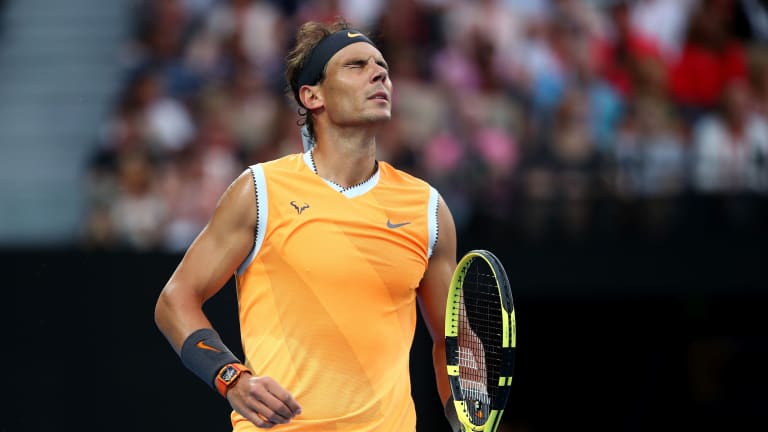Australian Open
As Nadal knows, Djokovic plays better when the opponent gets tougher
By Jan 27, 2019Australian Open
Venus Williams will become oldest woman to compete in an Australian Open main draw with wild card entry
By Jan 02, 2026Australian Open
Roger Federer to headline “Battle of the World No.1s” at Australian Open’s inaugural Opening Ceremony
By Dec 11, 2025Australian Open
Australia at Last: Reflections on a first trip to the AO
By Jan 29, 2025Australian Open
Alexander Zverev must elevate his game when it most counts—and keep it there
By Jan 27, 2025Australian Open
Jannik Sinner draws Novak Djokovic comparisons from Alexander Zverev after Australian Open final
By Jan 26, 2025Australian Open
Alexander Zverev left to say "I'm just not good enough" as Jannik Sinner retains Australian Open title
By Jan 26, 2025Australian Open
Jannik Sinner is now 3-0 in Grand Slam finals after winning second Australian Open title
By Jan 26, 2025Australian Open
Taylor Townsend and Katerina Siniakova win second women's doubles major together at the Australian Open
By Jan 26, 2025Australian Open
Madison Keys wins her first Grand Slam title at Australian Open by caring a little bit less
By Jan 25, 2025As Nadal knows, Djokovic plays better when the opponent gets tougher
Rafael Nadal suffered his first straight-sets loss in a Grand Slam final to the world No. 1, 6-3, 6-2, 6-3. It's the Serb's seventh Australian Open title and 15th career Grand Slam title.
Published Jan 27, 2019
Advertising

As Nadal knows, Djokovic plays better when the opponent gets tougher
© 2019 Getty Images
Advertising

As Nadal knows, Djokovic plays better when the opponent gets tougher
© AFP/Getty Images
Advertising

As Nadal knows, Djokovic plays better when the opponent gets tougher